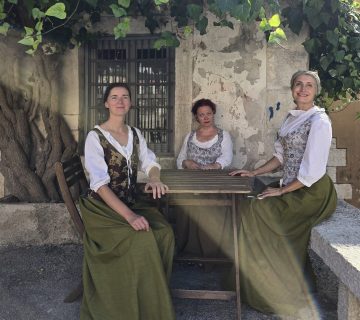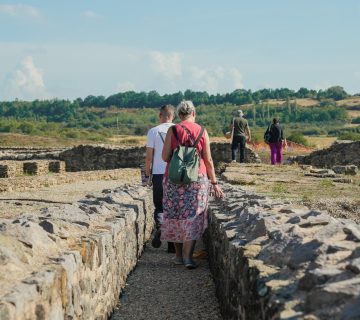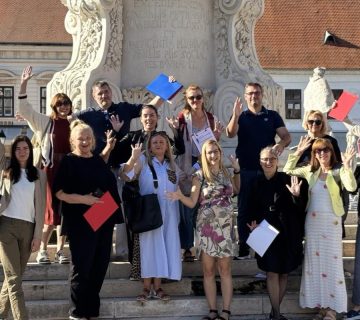At some point, we have all recognised heritage as a collection of stuff for a very specific audience. Nonetheless, the CIG course in the Basque Country showed that it is possible to experience heritage in many unseen ways.
Between 19-23 February, the IE Certified Interpretive Guide (CIG) course was held in Zizurkil and Alkiza, Basque Country, Spain. This course was given by Evarist March of Naturalwalks and organised by Bizibiziki, in collaboration with Hazi Fundazioa and Fraisoro Eskola. The participants came from different locations in the Basque Country and Navarre. We formed a very varied group, ranging from people with a background in the history of art to a local baserritarra (traditional Basque farmer). We all attended the course with the idea that we would learn about guiding groups properly and interpret heritage in an effective way.
At the beginning, we were all clearly dizzy with the new concepts and the way of facing heritage and the role of a guide, that is to say, to transform the phenomena into meaningful experiences. Just remember what this was like when you were a novice! On top of that, we were in such an incredible rural environment with intangibles, such as the Basque language and endless stories and legends. However, thanks to the high number of didactic activities and exercises, we quickly understood that emotions are key in the interpretation. The four aces finally made sense.
Halfway through the course, we had the opportunity to go to Alkiza, a small village on the slopes of Mount Hernio, where we worked on the preparation and materialisation of an interpretive walk. However, being a relatively large group, on a weekday, in such a small town, had his consequences; we immediately drew people’s attention and unwittingly learned that unforeseen events happen more than expected and that it is very important to know how to manage them. It seems to me that it turned out to be a very realistic class for everyone.
Finally, and after learning about the importance of sustainability in heritage interpretation, we did our final exams and conducted our very own interpretive talk. Even the most experienced guides were nervous, and with good reason. We had to apply the tricky new concepts learned in the last few days in a real interpretation experience. It was a great course and we certainly all gained some useful tools to apply in our areas. Nonetheless, the most valuable aspect of the course was that it is possible to experience heritage in many unseen ways.
Angel is an environmental scientist and is creating a local nature guiding project in Zumaia, Spain (www.basquenomads.com). You can get in touch with him at: olivares.angelp@gmail.com or info@basquenomads.com.
To cite this article:
Olivares Espinosa, Angel P. (2018) From stuff’ to phenomena in the Basque Country . In Interpret Europe Newsletter 1-2018, 12-13.
Available online:
www.interpret-europe.net/fileadmin/Documents/publications/Newsletters/ie-newsletter_2018-1_spring.pdf




